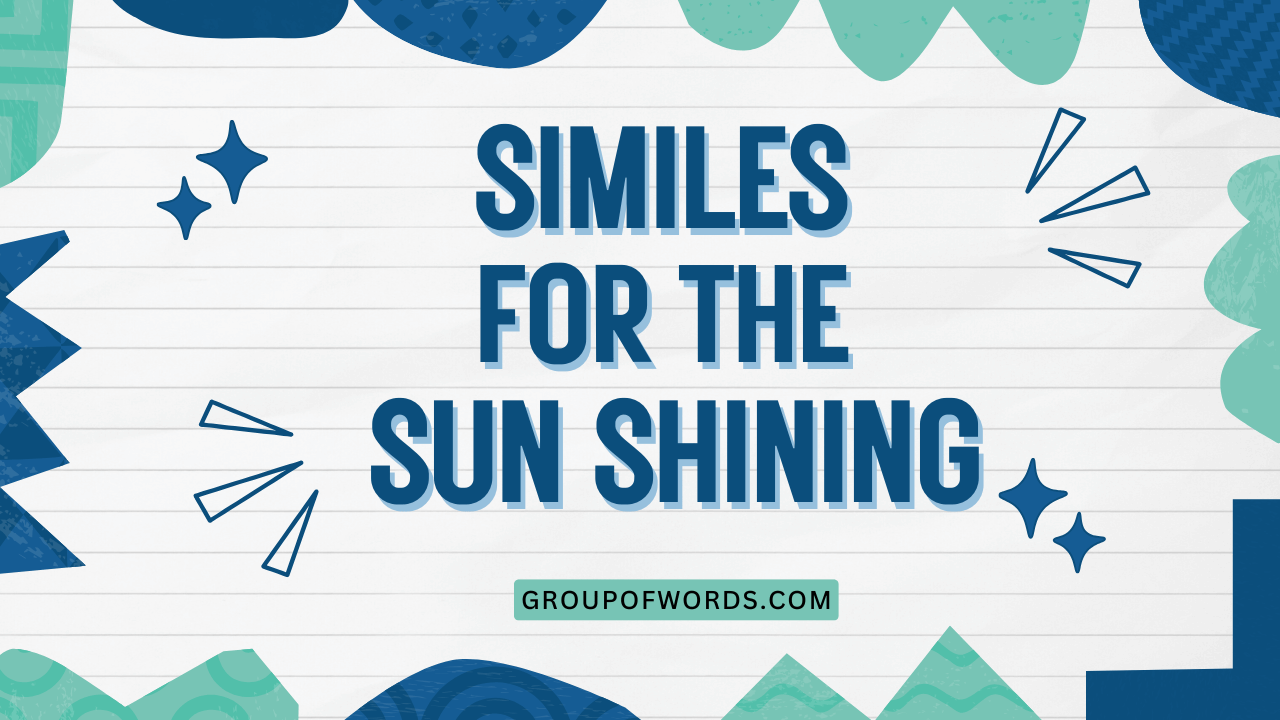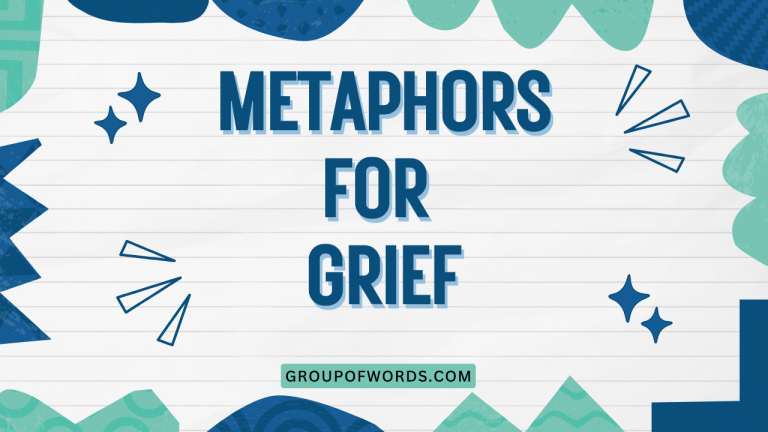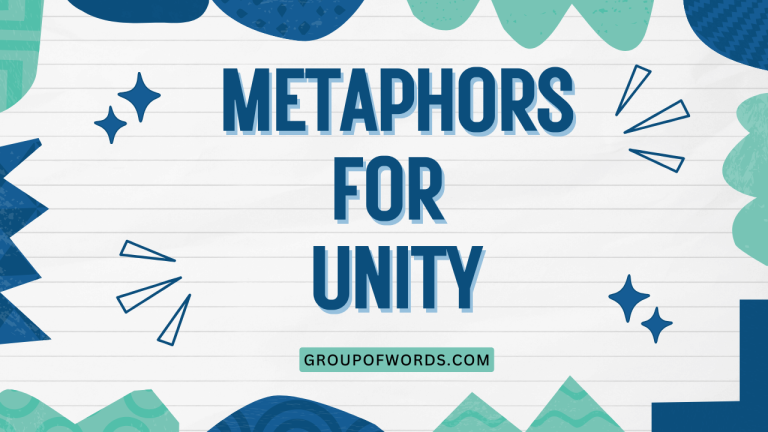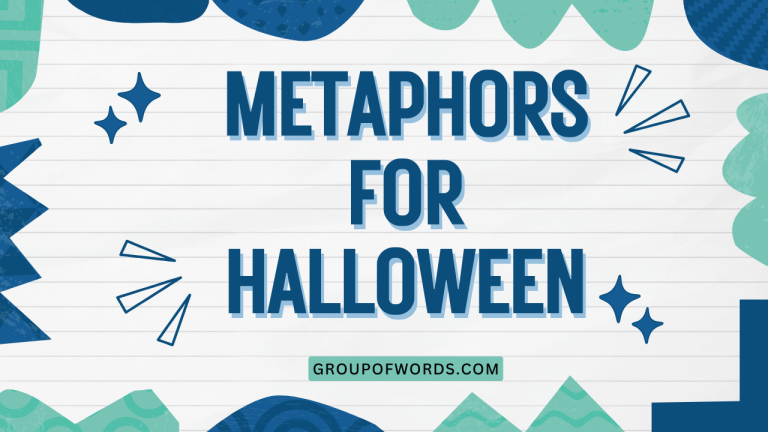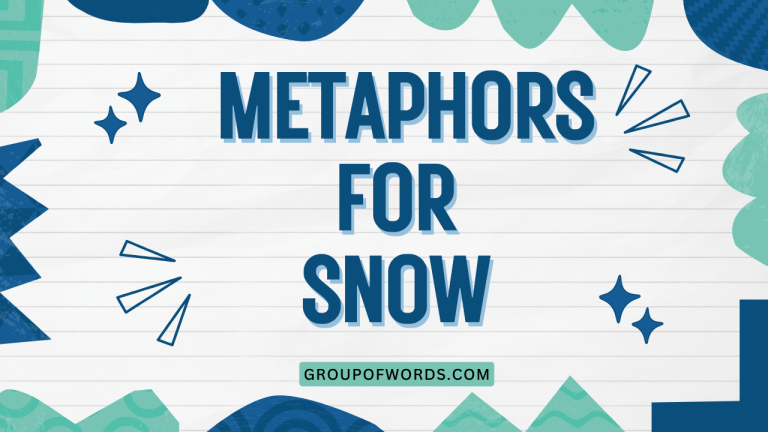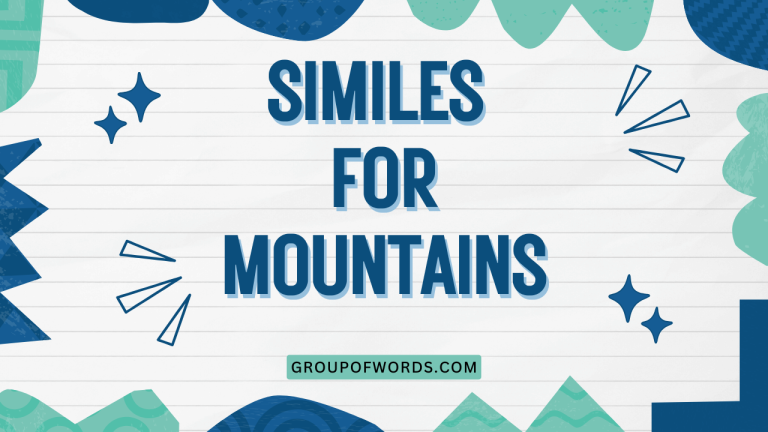Similes for Sun Shining: A Comprehensive Grammar Guide
Similes are powerful tools in the English language, allowing us to paint vivid pictures with words by comparing one thing to another. When describing the sun shining, similes can bring warmth, light, and brilliance to our writing.
This article delves into the art of crafting effective similes for the sun shining, exploring various techniques, examples, and usage rules. Whether you’re a student, writer, or simply someone looking to enhance their vocabulary, this guide will provide you with a comprehensive understanding of how to use similes to describe the sun’s radiant glow.
This article will benefit English language learners and native speakers alike, offering insights into the nuances of simile construction and usage. By the end of this guide, you’ll be equipped with the knowledge and skills to create compelling and imaginative descriptions of the sun’s shining glory.
Table of Contents
- Definition of Simile
- Structural Breakdown of Similes
- Types of Similes for the Sun Shining
- Examples of Similes for the Sun Shining
- Usage Rules for Similes
- Common Mistakes with Similes
- Practice Exercises
- Advanced Topics in Simile Usage
- Frequently Asked Questions
- Conclusion
Definition of Simile
A simile is a figure of speech that directly compares two different things using the words “like” or “as.” The purpose of a simile is to create a more vivid and descriptive image in the reader’s mind by drawing a parallel between the two things being compared. Similes are essential tools for writers and speakers who want to add depth, color, and emotional resonance to their language.
In the context of describing the sun shining, similes can help us convey the intensity, color, warmth, and overall effect of the sun’s rays. By comparing the sun’s attributes to familiar objects or concepts, we can create a more impactful and memorable image for our audience.
For example, saying “The sun shone like a spotlight” is more evocative than simply saying “The sun shone brightly.”
Classification: Similes fall under the broader category of figurative language, which also includes metaphors, personification, and hyperbole. They are specifically classified as comparisons, as they explicitly draw a connection between two unlike things.
Function: The primary function of a simile is to enhance descriptive writing and speech. It allows for creative expression and can evoke specific emotions or sensations in the reader or listener.
Contexts: Similes are widely used in literature, poetry, advertising, everyday conversation, and various forms of creative writing.
Structural Breakdown of Similes
The basic structure of a simile involves three key components:
- The subject: This is the thing being described or compared (in our case, the sun shining).
- The comparison word: This is either “like” or “as,” which explicitly indicates the comparison.
- The object of comparison: This is the thing to which the subject is being compared. It should share a common characteristic with the subject.
The formula for a simile can be represented as:
[Subject] + [Comparison Word (like/as)] + [Object of Comparison]
For example:
The sun shone like a golden coin.
In this example, “the sun shone” is the subject, “like” is the comparison word, and “a golden coin” is the object of comparison. The shared characteristic is the bright, radiant appearance.
Understanding this structure allows you to create your own similes effectively. By identifying the specific aspect of the sun shining you want to emphasize (e.g., its brightness, warmth, color), you can then choose an object of comparison that shares that characteristic.
The more creative and unexpected the comparison, the more impactful the simile will be.
Types of Similes for the Sun Shining
Similes for the sun shining can be categorized based on the specific aspect of the sun they emphasize. Here are some common types:
Similes Based on Light and Brightness
These similes focus on the sun’s radiant light and its ability to illuminate everything around it. They often use objects that are known for their brightness to draw a comparison.
Similes Based on Warmth and Heat
These similes emphasize the sun’s warmth and the heat it generates. They often compare the sun to things that are known for their warmth, such as a fire, a blanket, or a furnace.
Similes Based on Color and Appearance
These similes focus on the sun’s color and visual appearance. They often use objects that share a similar color or visual quality, such as gold, amber, or a jewel.
Similes Based on Intensity and Power
These similes highlight the sun’s intensity and the powerful effect it has on the environment. They often compare the sun to things that are strong and impactful, such as a spotlight, a laser, or a forge.
Similes Based on Emotional Impact
These similes focus on the feelings or emotions that the sun evokes. They often compare the sun to things that inspire joy, hope, or comfort, such as a smile, a blessing, or a warm embrace.
Examples of Similes for the Sun Shining
Here are numerous examples of similes for the sun shining, organized by category. These examples demonstrate the variety and creativity that can be employed when using similes to describe the sun’s radiant glow.
Light and Brightness Examples
The following table provides examples of similes that focus on the light and brightness of the sun. Each example aims to create a vivid image of the sun’s radiant illumination.
| Simile | Explanation |
|---|---|
| The sun shone like a spotlight on the stage. | Emphasizes the focused and intense beam of light. |
| The sun shone as bright as a diamond. | Compares the sun’s brilliance to the sparkle of a diamond. |
| The sun shone like a beacon in the sky. | Highlights the sun’s role as a guiding light. |
| The sun shone as clear as crystal. | Focuses on the purity and clarity of the sunlight. |
| The sun shone like a thousand stars combined. | Emphasizes the overwhelming brightness of the sun. |
| The sun shone as radiant as a lighthouse beam. | Compares the sun’s radiance to the powerful beam of a lighthouse. |
| The sun shone like polished silver. | Highlights the reflective and gleaming quality of the sunlight. |
| The sun shone as luminous as a pearl. | Emphasizes the soft, glowing light of the sun. |
| The sun shone like a newly minted coin. | Compares the sun’s brightness to the fresh gleam of a new coin. |
| The sun shone as dazzling as a mirror. | Highlights the reflective and blinding quality of the sunlight. |
| The sun shone like a celestial lamp. | Emphasizes the sun’s role as a source of light in the sky. |
| The sun shone as bright as day. | A simple yet effective comparison to the typical brightness of daylight. |
| The sun shone like a halogen bulb. | Compares the sun’s intense brightness to a powerful halogen light. |
| The sun shone as clear as glass. | Focuses on the unobstructed and pure quality of the sunlight. |
| The sun shone like a flash of lightning. | Emphasizes the sudden and intense burst of light. |
| The sun shone as radiant as a supernova. | Compares the sun’s radiance to the explosive brightness of a supernova. |
| The sun shone like a searchlight. | Highlights the focused and penetrating quality of the sunlight. |
| The sun shone as luminous as a firefly. | Emphasizes the gentle, glowing light of the sun. |
| The sun shone like a brilliant star. | Compares the sun’s brightness to the familiar twinkle of a star. |
| The sun shone as dazzling as a disco ball. | Highlights the reflective and scattered light of the sun. |
| The sun shone like an incandescent bulb. | Comparing the sun to a common source of bright light. |
| The sun shone as bright as a welder’s torch. | Emphasizing the intense and focused brightness. |
| The sun shone like a laser beam. | Highlighting the concentrated and powerful light. |
| The sun shone as clear as the morning dew. | Focusing on the purity and freshness of the light. |
Warmth and Heat Examples
This table provides examples of similes that emphasize the warmth and heat of the sun, comparing it to various sources of heat and comfort.
| Simile | Explanation |
|---|---|
| The sun shone like a warm embrace. | Compares the sun’s warmth to the comfort of a hug. |
| The sun shone as hot as a furnace. | Emphasizes the intense heat of the sun. |
| The sun shone like a comforting blanket. | Highlights the soothing warmth of the sun. |
| The sun shone as toasty as a fireplace. | Compares the sun’s warmth to the cozy heat of a fireplace. |
| The sun shone like a gentle oven. | Emphasizes the steady and pervasive warmth of the sun. |
| The sun shone as warm as a summer day. | A direct comparison to the characteristic warmth of summer. |
| The sun shone like a heated stone. | Highlights the radiating warmth of the sun. |
| The sun shone as scorching as a desert wind. | Emphasizes the intense and dry heat of the sun. |
| The sun shone like a hot cup of cocoa. | Compares the sun’s warmth to the comforting heat of a warm drink. |
| The sun shone as fiery as a dragon’s breath. | Highlights the intense and burning heat of the sun. |
| The sun shone like a blacksmith’s forge. | Emphasizing the intense heat used for metalworking. |
| The sun shone as warm as a mother’s love. | Comparing the sun’s warmth to a feeling of affection. |
| The sun shone like a tropical breeze. | Highlighting the pleasant and warm sensation. |
| The sun shone as hot as a pizza oven. | Emphasizing the high temperature of the sun. |
| The sun shone like a radiator in winter. | Comparing the sun to a source of warmth during cold weather. |
| The sun shone as scorching as a volcano’s lava. | Highlighting the intense and destructive heat. |
| The sun shone like a sauna’s heat. | Emphasizing the enveloping and intense warmth. |
| The sun shone as warm as freshly baked bread. | Comparing the sun’s warmth to a comforting and delicious sensation. |
| The sun shone like a glowing ember. | Highlighting the sustained and gentle warmth. |
| The sun shone as fiery as a phoenix. | Emphasizing the transformative and intense heat. |
| The sun shone like a summer barbecue. | Comparing the sun to a source of enjoyable outdoor warmth. |
| The sun shone as hot as molten gold. | Emphasizing the sun’s heat with a precious metal comparison. |
| The sun shone like a desert mirage. | Highlighting the deceptive and shimmering heat. |
| The sun shone as warm as a cat’s purr. | Comparing the sun to a comforting and soothing sound. |
Color and Appearance Examples
This table provides examples of similes that focus on the color and appearance of the sun, comparing it to objects with similar hues and visual qualities.
| Simile | Explanation |
|---|---|
| The sun shone like liquid gold. | Compares the sun’s color to the rich hue of molten gold. |
| The sun shone as yellow as a daffodil. | Emphasizes the bright yellow color of the sun. |
| The sun shone like a fiery orange. | Highlights the vibrant orange color of the sun. |
| The sun shone as golden as a honey pot. | Compares the sun’s color to the sweet, golden hue of honey. |
| The sun shone like a painted canvas. | Emphasizes the colorful and artistic appearance of the sun. |
| The sun shone as bright as a sunflower. | A direct comparison to the bright yellow color of a sunflower. |
| The sun shone like a shimmering topaz. | Highlights the sparkling, golden color of the sun. |
| The sun shone as amber as aged whiskey. | Compares the sun’s color to the warm, amber hue of whiskey. |
| The sun shone like a bronze statue. | Emphasizes the metallic and reddish-brown color of the sun. |
| The sun shone as radiant as a sunset sky. | Highlights the colorful and vibrant appearance of the sun. |
| The sun shone like a tangerine dream. | Emphasizing a vibrant orange and dreamlike quality. |
| The sun shone as yellow as a lemon drop. | Comparing the sun to a bright and cheerful sweet. |
| The sun shone like a saffron spice. | Highlighting the rich and golden-yellow color. |
| The sun shone as golden as a field of wheat. | Emphasizing the abundant and natural gold color. |
| The sun shone like a coral gem. | Comparing the sun to a precious and vibrant stone. |
| The sun shone as radiant as a peacock’s feathers. | Highlighting the colorful and iridescent appearance. |
| The sun shone like a brass instrument. | Emphasizing the metallic and resonant color. |
| The sun shone as amber as autumn leaves. | Comparing the sun to the warm and earthy colors of fall. |
| The sun shone like a copper penny. | Highlighting the metallic and reddish color. |
| The sun shone as fiery as a ruby. | Emphasizing the intense and passionate color. |
| The sun shone like a marigold. | Comparing the sun to a vibrant orange-yellow flower. |
| The sun shone as golden as corn silk. | Emphasizing the delicate and natural gold hue. |
| The sun shone like a topaz jewel. | Highlighting the precious and radiant appearance. |
| The sun shone as yellow as a buttercup. | Comparing the sun to a cheerful and bright flower. |
Intensity and Power Examples
This table showcases similes that focus on the intensity and power of the sun’s rays, comparing it to strong and impactful forces.
| Simile | Explanation |
|---|---|
| The sun shone like a laser beam, cutting through the clouds. | Emphasizes the focused and penetrating intensity of the sunlight. |
| The sun shone as powerful as a forge, melting away the frost. | Compares the sun’s strength to the heat and power of a forge. |
| The sun shone like a giant spotlight, illuminating the world. | Highlights the sun’s role as a powerful source of light. |
| The sun shone as intense as a magnifying glass, burning through the leaves. | Compares the sun’s intensity to the focused heat of a magnifying glass. |
| The sun shone like a celestial hammer, pounding down on the earth. | Emphasizes the forceful and impactful nature of the sunlight. |
| The sun shone as strong as a thousand suns, radiating energy. | A hyperbolic comparison to emphasize the sun’s immense power. |
| The sun shone like a solar flare, bursting with energy. | Highlights the explosive and dynamic power of the sun. |
| The sun shone as forceful as a tidal wave, washing over the land. | Compares the sun’s power to the overwhelming force of a tidal wave. |
| The sun shone like a cosmic furnace, heating the entire planet. | Emphasizes the all-encompassing and transformative power of the sun. |
| The sun shone as bright as a nuclear blast, a blinding light. | A dramatic comparison to the intense and destructive power of a nuclear explosion. |
| The sun shone like a celestial spotlight, piercing the atmosphere. | Emphasizing the concentrated and penetrating light. |
| The sun shone as powerful as a solar storm, electrifying the air. | Comparing the sun to a source of intense energy. |
| The sun shone like a cosmic ray, energizing all life. | Highlighting the vital and life-giving power. |
| The sun shone as intense as a supernova’s afterglow. | Emphasizing the lingering and powerful radiance. |
| The sun shone like a divine decree, unyielding and absolute. | Comparing the sun’s power to an authoritative force. |
| The sun shone as forceful as a desert sun, relentless and unforgiving. | Highlighting the harsh and unyielding intensity. |
| The sun shone like a blacksmith’s hammer, shaping the day. | Emphasizing the transformative and shaping power. |
| The sun shone as bright as a welder’s arc, searing and intense. | Comparing the sun to a source of focused and burning light. |
| The sun shone like a beacon of hope, guiding through darkness. | Highlighting the guiding and uplifting power. |
| The sun shone as powerful as a life force, sustaining all beings. | Emphasizing the essential and life-giving power. |
| The sun shone like a magnifying glass on dry grass. | Illustrating the potential for intense, focused energy. |
| The sun shone as forceful as a summer thunderstorm. | Comparing the sun’s energy to a powerful natural event. |
| The sun shone like a heat lamp on a reptile. | Emphasizing the life-sustaining warmth and energy. |
| The sun shone as intense as an athlete’s determination. | Comparing the sun’s power to a strong internal drive. |
Emotional Impact Examples
This table presents similes that convey the emotional impact of the sun shining, comparing it to feelings of joy, hope, and comfort.
| Simile | Explanation |
|---|---|
| The sun shone like a warm smile, brightening the morning. | Compares the sun’s warmth to the feeling of joy and happiness. |
| The sun shone as hopeful as a new dawn, promising a fresh start. | Emphasizes the optimistic and encouraging nature of the sunlight. |
| The sun shone like a gentle blessing, showering the earth with warmth. | Highlights the comforting and benevolent aspect of the sun. |
| The sun shone as comforting as a mother’s hug, soothing the soul. | Compares the sun’s warmth to the feeling of security and love. |
| The sun shone like a beacon of hope, guiding lost souls. | Emphasizes the guiding and uplifting effect of the sunlight. |
| The sun shone as joyful as a child’s laughter, filling the air with happiness. | Compares the sun’s radiance to the sound of pure joy. |
| The sun shone like a warm embrace, wrapping the world in comfort. | Highlights the soothing and comforting nature of the sunlight. |
| The sun shone as encouraging as a pat on the back, inspiring confidence. | Compares the sun’s warmth to a feeling of support and encouragement. |
| The sun shone like a soothing balm, healing the wounds of the day. | Emphasizes the restorative and healing effect of the sunlight. |
| The sun shone as peaceful as a quiet meditation, calming the mind. | Compares the sun’s warmth to a feeling of serenity and tranquility. |
| The sun shone like a warm invitation, beckoning us outdoors. | Emphasizing the appealing and welcoming nature of the sun. |
| The sun shone as uplifting as a gospel choir, raising our spirits. | Comparing the sun to a source of joyous and powerful inspiration. |
| The sun shone like a gentle caress, soothing our worries. | Highlighting the tender and comforting touch of the sun. |
| The sun shone as hopeful as a rainbow after the storm, promising brighter days. | Emphasizing the promise of better times after hardship. |
| The sun shone like a warm memory, filling us with nostalgia. | Comparing the sun to a cherished and comforting recollection. |
| The sun shone as joyful as a wedding day, celebrating new beginnings. | Highlighting the happiness and optimism associated with the sun. |
| The sun shone like a soft lullaby, calming our fears. | Emphasizing the soothing and reassuring presence of the sun. |
| The sun shone as peaceful as a sleeping child, radiating innocence. | Comparing the sun to a symbol of purity and tranquility. |
| The sun shone like a warm hearth, offering refuge and comfort. | Highlighting the sense of safety and warmth provided by the sun. |
| The sun shone as encouraging as a winning smile, boosting our morale. | Comparing the sun to a source of confidence and encouragement. |
| The sun shone like a warm blanket on a cold morning. | Illustrating the feeling of comfort and security. |
| The sun shone as cheerful as a summer picnic. | Comparing the sun to a joyful and carefree event. |
| The sun shone like a reunion with a dear friend. | Emphasizing the warmth and happiness of connection. |
| The sun shone as comforting as a favorite song. | Comparing the sun to a source of personal solace. |
Usage Rules for Similes
When using similes, it’s important to follow certain guidelines to ensure clarity and effectiveness:
- Ensure a clear connection: The two things being compared should share a common characteristic or quality. The comparison should be logical and easily understood by the reader.
- Avoid clichés: Overused similes can sound unoriginal and lack impact. Strive for fresh and creative comparisons.
- Maintain consistency: The simile should fit the tone and style of the writing. Avoid using overly complex or obscure comparisons in simple and straightforward contexts.
- Use sparingly: While similes can enhance writing, overusing them can make the text feel cluttered and artificial. Use them strategically to highlight key descriptions or emotions.
- Context matters: Ensure the simile makes sense within the context of the sentence and the overall piece of writing.
- Consider your audience: Tailor your similes to be relatable and understandable for your intended audience.
Common Mistakes with Similes
Here are some common mistakes to avoid when using similes:
| Incorrect | Correct | Explanation |
|---|---|---|
| The sun shone like a car. | The sun shone like a spotlight. | The sun and a car have no relevant shared characteristics. |
| The sun shone as bright as the sun. | The sun shone as bright as a diamond. | Comparing something to itself is redundant and ineffective. |
| The sun shone like it was shining. | The sun shone like liquid gold. | The comparison should add descriptive detail, not state the obvious. |
| The sun shone like hot. | The sun shone as hot as a furnace. | Missing comparison word. |
| The sun shone like warm. | The sun shone like a warm embrace. | Missing comparison word. |
Practice Exercises
Test your understanding of similes with these practice exercises. Fill in the blanks to complete the similes, or create your own similes based on the given prompts.
Exercise 1: Complete the Simile
| Question | Answer |
|---|---|
| The sun shone like a __________. | The sun shone like a golden coin. |
| The sun shone as bright as __________. | The sun shone as bright as a diamond. |
| The sun shone like __________, cutting through the clouds. | The sun shone like a laser beam, cutting through the clouds. |
| The sun shone as warm as __________. | The sun shone as warm as a summer day. |
| The sun shone like a __________ on the stage. | The sun shone like a spotlight on the stage. |
| The sun shone as golden as __________. | The sun shone as golden as a honey pot. |
| The sun shone like a __________ in the sky. | The sun shone like a beacon in the sky. |
| The sun shone as powerful as __________. | The sun shone as powerful as a forge. |
| The sun shone like a __________ embrace. | The sun shone like a warm embrace. |
| The sun shone as hopeful as __________. | The sun shone as hopeful as a new dawn. |
Exercise 2: Create Your Own Simile
| Prompt | Possible Answer |
|---|---|
| Describe the sun shining in terms of its warmth. | The sun shone like a heated blanket, warming my skin. |
| Describe the sun shining in terms of its brightness. | The sun shone as radiant as a supernova, lighting up the galaxy. |
| Describe the sun shining in terms of its color. | The sun shone like liquid gold, spilling across the horizon. |
| Describe the sun shining in terms of its intensity. | The sun shone as forceful as a blacksmith’s hammer, shaping the day. |
| Describe the sun shining in terms of its emotional impact. | The sun shone like a warm smile, chasing away the morning chill. |
| Describe the sun shining in terms of its gentle nature. | The sun shone like a soft caress, barely felt on my face. |
| Describe the sun shining in the desert. | The sun shone as relentless as a desert storm, baking the sand. |
| Describe the sun shining after a rain. | The sun shone like a new beginning, glittering on the wet leaves. |
| Describe the sun shining through the trees. | The sun shone like dappled gold, filtering through the forest canopy. |
| Describe the sun shining on the ocean. | The sun shone as bright as a million diamonds, scattered across the waves. |
Advanced Topics in Simile Usage
For advanced learners, consider exploring these more complex aspects of simile usage:
- Extended Similes: These are longer, more detailed similes that develop the comparison over multiple sentences or paragraphs.
- Implied Similes: These are similes where the comparison word (“like” or “as”) is omitted, creating a more subtle and nuanced effect.
- Similes vs. Metaphors: Understand the difference between similes and metaphors and when to use each one for maximum impact. A metaphor states something *is* something else, while a simile states something *is like* something else.
- Using Similes for Tone: Explore how similes can be used to create a specific tone or mood in your writing.
- Cultural Sensitivity: Be aware of cultural differences and avoid similes that may be offensive or inappropriate in certain contexts.
Frequently Asked Questions
- What is the difference between a simile and a metaphor?
A simile is a comparison using “like” or “as,” while a metaphor directly states that one thing is another. For example, “The sun shone like gold” (simile) vs. “The sun was gold” (metaphor).
- How can I avoid using clichés in my similes?
Think outside the box and try to come up with fresh and original comparisons. Use concrete and specific details to make your similes more vivid and memorable.
- Can I use similes in formal writing?
Yes, but use them sparingly and ensure they are appropriate for the tone and style of the piece. Avoid overly casual or colloquial comparisons.
- How many similes should I use in a piece of writing?
There is no set rule, but it’s generally best to use similes judiciously. Overusing them can make your writing feel forced and artificial. Use them when they can truly enhance the description or evoke a specific emotion.
-
Are similes and analogies the same?
No, while both involve comparisons, analogies are more complex and explain the relationship between two things, whereas similes simply compare two things using “like” or “as.”
Conclusion
Similes are a valuable tool for enriching your writing and creating vivid imagery. By understanding the structure, types, and usage rules of similes, you can effectively describe the sun shining in a way that captivates your audience and evokes specific emotions.
Experiment with different comparisons, avoid clichés, and use similes judiciously to enhance your writing style. With practice, you’ll be able to craft compelling and memorable descriptions of the sun’s radiant glow.
